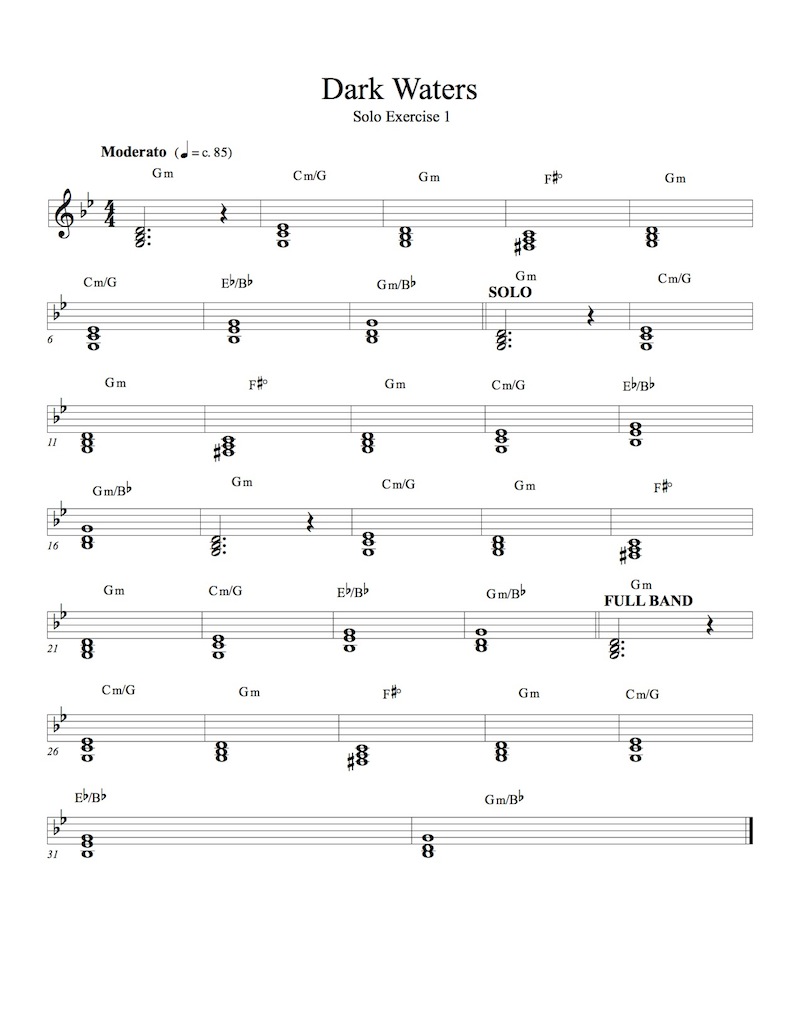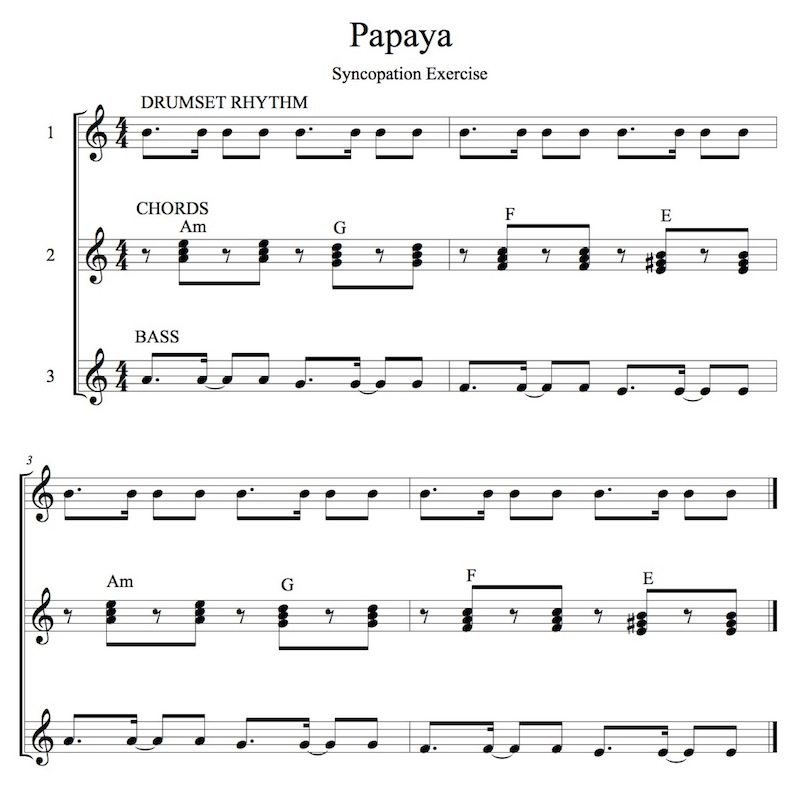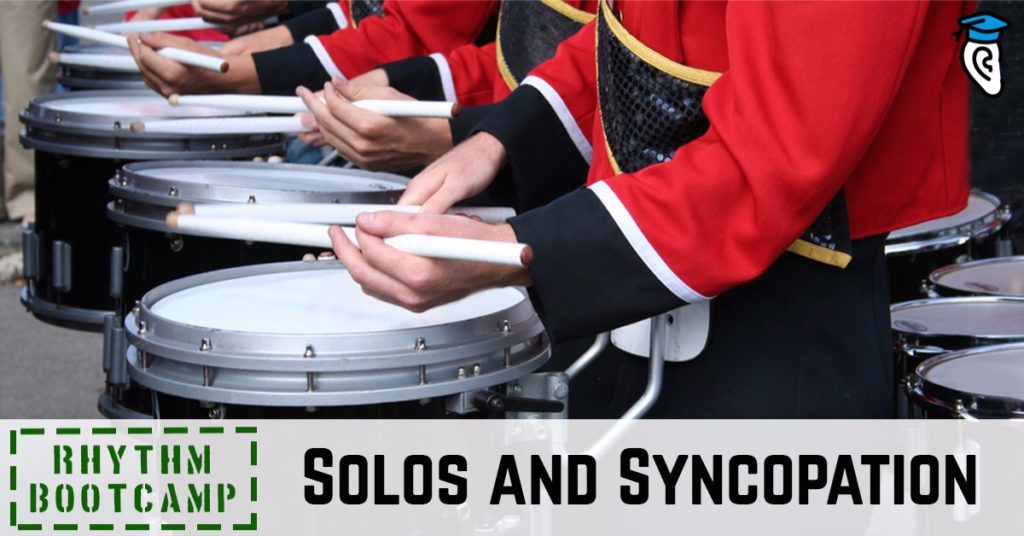Earlier in this series we addressed some common rhythm problem spots like song transitions when you are trying to maintain good rhythm, and time in live performance situations. Two other common problem areas for musicians when it comes to rhythm are solos and complex syncopated rhythms.
Why do solos and syncopation cause rhythm problems?
Much of the music we hear on the radio keeps to a solid 4/4 time and simple rhythms. Because of this, our ears are accustomed to hearing simplicity in rhythm, not complexity. Unless you grew up in places like Miami, Ghana, or India, where complex, syncopated rhythms are a natural part of the local music scene!
For example, Taylor Swift’s “Shake It Off” is in 4/4 time and has a very predictable fun pop rock beat.
By comparison, “I Believe Mirror Mirror Mix” is inspired by Bollywood elements and has more complex rhythms in the Indian tabla drums mixed with pop beats.
In the two examples above, you can hear some of the rhythmic differences, especially when contrasting the straightforward pop rock beat in the “Shake it Off” drumset with the complex tabla rhythms in “I believe”.
Here’s Herbie Hancock playing Jazz Fusion: “Canteloupe Island”:
In “Canteloupe Island”, you can hear more swinging jazz complex rhythmic beauty that strays far away from predictable pop sounds.
Because many musicians are not immersed in complex rhythms, they might find syncopated rhythms, complex jazz music, and non-western rhythms difficult to execute with rhythmic accuracy.
Solo Problemos
Another area that causes rhythm difficulty for musicians are solo sections. While you are playing the standard vamp (accompaniment), it might not be too difficult to keep time and rhythmic accuracy, but it takes time and great technique to master good soloing.
Why is that? Many times musicians get so caught up in their amazing virtuosity, especially beginning musicians, that they forget they need to keep time or eventually get back to the song. Because solos often involve much more complex melodic and rhythmic figures, a musician can get tripped up if they don’t know their part or they lose track of time.
Because of this, it’s important that while you are soloing, you have fun but also consciously keep the tempo and solid rhythm, even if you choose to stretch and bend the time a little bit.
Exercise: Solo over “Dark Waters”
Let’s practice keeping good time in a solo situation.
Instructions
- Listen to the audio track.
- In the space in between chord changes, improvise on your instrument or with your voice using the chords provided.
- Use the chord sheet and chord practice track first before moving to the full track.
- Keep practicing with harder improvisations, always making sure that you don’t lose time.

Exercise: Latin Band
In the next exercise you are going to practice syncopated Latin rhythms with a virtual band. The individual parts are repeating with the same chord structure throughout, allowing you plenty of time to master the rhythms. Depending on your musical skills, you can choose to simply tap along with drumsticks, play on your instrument, or sing along.
You are provided with three different syncopated rhythms: The Drumset, The Chords (played by the keyboard), and Bass. Notice how each rhythm is different.
Example: Latin Beat “Papaya”
Instructions
- Listen to the practice track.
- Tap the tempo with your feet.
- Play along with the band on your instrument.
- Try tapping each of the rhythms.
- Play the notes on your instrument or sing on “la”.
- Improvise over the track.

Solos and Syncopation? Sorted!
Use these tips and exercises to practice handling solo sections and syncopated rhythms while keeping a solid sense of the beat. Continue mastering complex rhythms with solid everyday practice. Play with these practice tracks or listen to them as you go about your day. Internalize the beat and grow in confidence as you master rhythm! And nothing will grow that mastery like everyday practice…








